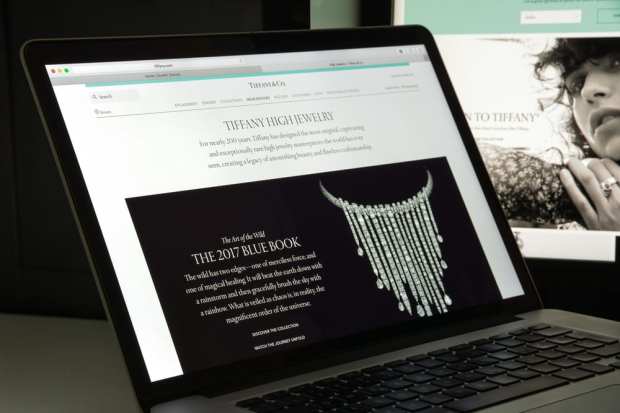Diamonds Are Forever … And Sales Are Headed Online

Carat, cut, color and clarity. They’re known as the “four Cs” of diamond evaluation – and soon, this most luxurious of luxury goods could be adding a new C: commerce. Well, eCommerce, to be more exact. Diamonds are starting to find a reliable online stage as the digital shift sweeps them into the new consumer channel of preference.
“The internet has evolved the sales process quite a bit,” Jeff Becker, owner of new eCommerce entry D.NEA Diamonds, told PYMNTS. “There are now quite a few reputable online vendors of diamonds. The pricing is very aggressive compared to jewelry stores, due to lower overhead and broader reach. As consumers get more sophisticated and educated, they are becoming more comfortable buying based on specifications and photos online. This is putting pressure on some physical retail stores and driving the online folks to compete aggressively for a growing slice of the business.”
That “growing slice” is populated by big names like Tiffany and De Beers, as well as online specialty jewelers such as Blue Nile. Diamonds-USA.com sells over $500 million worth of diamonds on its website, which amounts to over $400,000 apiece, according to an August report from the company.
“Today, an online seller is able to offer the same diamonds displayed at a local seller’s, at a much more competitive price,” says the report. “So, why would a buyer still prefer to buy their jewelry anywhere but online? Online, you can get quotes from a dozen sellers in real time within an hour. How many physical stores will you be able to cover in the same time? The internet increases the scope of research, making it possible for buyers to get the best deals with a small effort.”
D.NEA just launched its digital presence in early August. According to Becker, the big trend right now is the shift from mined diamonds to lab-made diamonds. It is a controversial topic in jewelry circles, with very polarizing points of view. Becker noted that the mined diamond business is just about flat, and the mines were shut down across the globe during the pandemic. Meanwhile, the lab-grown business is growing at about 15-20 percent per year.
“It’s obvious that things are trending toward lab-grown, but not without heavy resistance from certain segments of the business,” he said. “D.NEA has been focused on lab diamonds for over a decade. In my opinion, the technology of growing diamonds has finally caught up to the point where the quality works for mainstream consumers. If the quality is on par and the product is the same down to a molecular level, it is more environmentally friendly, with no ethical concerns that some mined diamonds may carry, and the price is less.”
There is, of course, the traditional side of the argument that says the only diamond comes from a mine. And although the pandemic and correlating economic shocks have rocked the luxury goods business, companies like De Beers recognize an opportunity, whether it’s online or off. In fact, a dealer letter from De Beers predicts that diamonds will be the big gift of 2020, and urges its retailers to position diamonds as a substitute for another sector that has taken a hit: travel.
“A series of interviews in July 2020 with independent jewelry retailers and local jewelry chains shows that retailers’ experiences reflect what the data indicates about a reduced spend on travel,” according to De Beers. “Their customers who have remained employed and/or qualify as affluent have continued to buy as normal, and in fact, average tickets have increased. Many believe that this is due to available discretionary funds that formerly would have been allocated to travel, live entertainment and fine dining.”
While the inertia is definitely trending toward online sales, the category is in its nascent stages. A pre-pandemic report from Bain shows that eCommerce comprises just 5 percent to 10 percent of the total market. “However, eCommerce is accelerating, and major diamond jewelry retailers in the U.S. and China increased their online sales to 13 percent and 11 percent, respectively,” the report says. “Greater pricing transparency and retail stock optimization caused by eCommerce will significantly affect demand and pricing for polished diamonds.”
